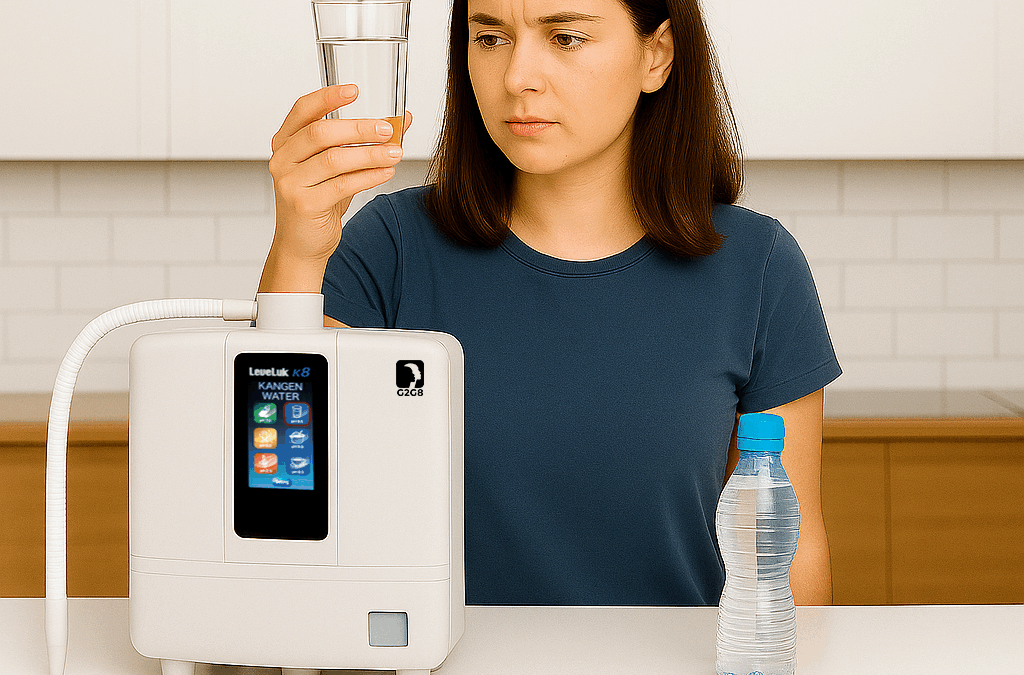As awareness of health, sustainability, and environmental impact continues to grow and value for money becomes increasingly important, the type of water we consume is becoming more than just a preference—it is a lifestyle decision. While bottled water has long been the go-to option for “clean” drinking water, a rising alternative is capturing attention: electrolyzed water. However, what exactly sets them apart?
What Is Bottled Water?
Bottled water refers to purified water, filtered or sourced from natural springs and then packaged for consumer convenience. It comes in several forms:
- Spring water comes from underground aquifers.
- Purified water is typically produced through the use of reverse osmosis or distillation.
- Mineral water contains a natural abundance of minerals, including calcium, magnesium, and potassium.
While bottled water is often marketed for its purity and taste, concerns have been raised regarding its environmental impact, microplastic contamination, and questionable quality in some cases. Studies indicate that bottled water may contain microplastics and chemicals that leach from plastic packaging, particularly when exposed to heat or stored for extended periods of time. (Mason et al., 2018).
What is Electrolyzed Water?
Electrolyzed water, also known as electrolyzed reduced water (ERW) or alkaline ionized water, is created by passing tap water through a process called electrolysis.
This process:
- Splits the water into two streams: one alkaline (for drinking) and the other acidic (for cleaning).
- It enhances water with hydrogen ions and antioxidants.
- Reduces the oxidation-reduction potential (ORP), making it a powerful antioxidant.
One of the most recognized systems for creating electrolyzed water is Kangen® Water, produced using Enagic’s water ionizers. Kangen Water machines allow users to select water at various pH levels for specific purposes, ranging from strong alkaline water for drinking to acidic water for cleaning and sanitizing. This flexibility has made Kangen Water a popular choice among health-conscious households.
Advocates claim that electrolyzed water offers a range of health benefits, including improved hydration, acid-neutralization, and support for detoxification. These potential benefits empower them to make informed decisions about health and well-being.
Key Differences:
| Feature | Bottled Water | Electrolyzed Water |
| Source | Natural springs, municipal water | Tap water through electrolysis |
| Filtration | Varies by brand (some use RO, UV) | Pre-filtration + electrolysis |
| pH Level | Typically neutral (6.5–7.5) | Can range from acidic (3.0) to alkaline (9.5+) |
| Health Benefits | Hydration, basic mineral support | Antioxidant potential, pH balance, cellular hydration |
| Plastic Use | High (single-use bottles) | Low (reusable containers encouraged) |
| Cost Over Time | High (recurring purchases) | Lower (one-time machine investment) |
Health and Environmental Considerations
From a health perspective, electrolyzed water may offer enhanced hydration and antioxidant properties due to its molecular hydrogen content. Studies suggest that molecular hydrogen in ERW may help reduce oxidative stress and support conditions such as metabolic syndrome and inflammation (Ohsawa et al., 2007; Huang et al., 2010).
While bottled water is often convenient and considered safe, it significantly contributes to plastic waste. The Earth Policy Institute reports that people purchase over 1 million plastic bottles every minute globally but recycle less than 30% of them. This alarming statistic should motivate us to make more sustainable choices.
Electrolyzed water systems, such as Kangen Water, reduce the need for single-use plastics, allowing families to create clean, ionized water on demand—thereby reducing environmental harm while supporting personal health goals.
Which Option is the Better Choice?
For those who prioritize convenience during travel or in emergencies, bottled water may still serve a purpose. For long-term wellness, sustainability, and cost-efficiency, electrolyzed water presents a more forward-thinking solution. This decision goes beyond hydration—it reflects an investment in health, household practices, and environmental responsibility.
References
- Mason, S. A., Welch, V. G., & Neratko, J. (2018). Synthetic Polymer Contamination in Bottled Water. Frontiers in Chemistry, 6, 407. https://doi.org/10.3389/fchem.2018.00407
- Ohsawa, I. et al. (2007). Hydrogen acts as a therapeutic antioxidant by selectively reducing cytotoxic oxygen radicals. Nature Medicine, 13(6), 688–694. https://doi.org/10.1038/nm1577
- Huang, C.-S., Kawamura, T., Toyoda, Y., & Nakao, A. (2010). Recent advances in hydrogen research as a therapeutic medical gas. Free Radical Research, 44(9), 971–982. https://doi.org/10.3109/10715762.2010.500328
- Earth Policy Institute (2017). Bottled Water: Pouring Resources Down the Drain. http://www.earth-policy.org/press_room/C68/bottled_water_stats

